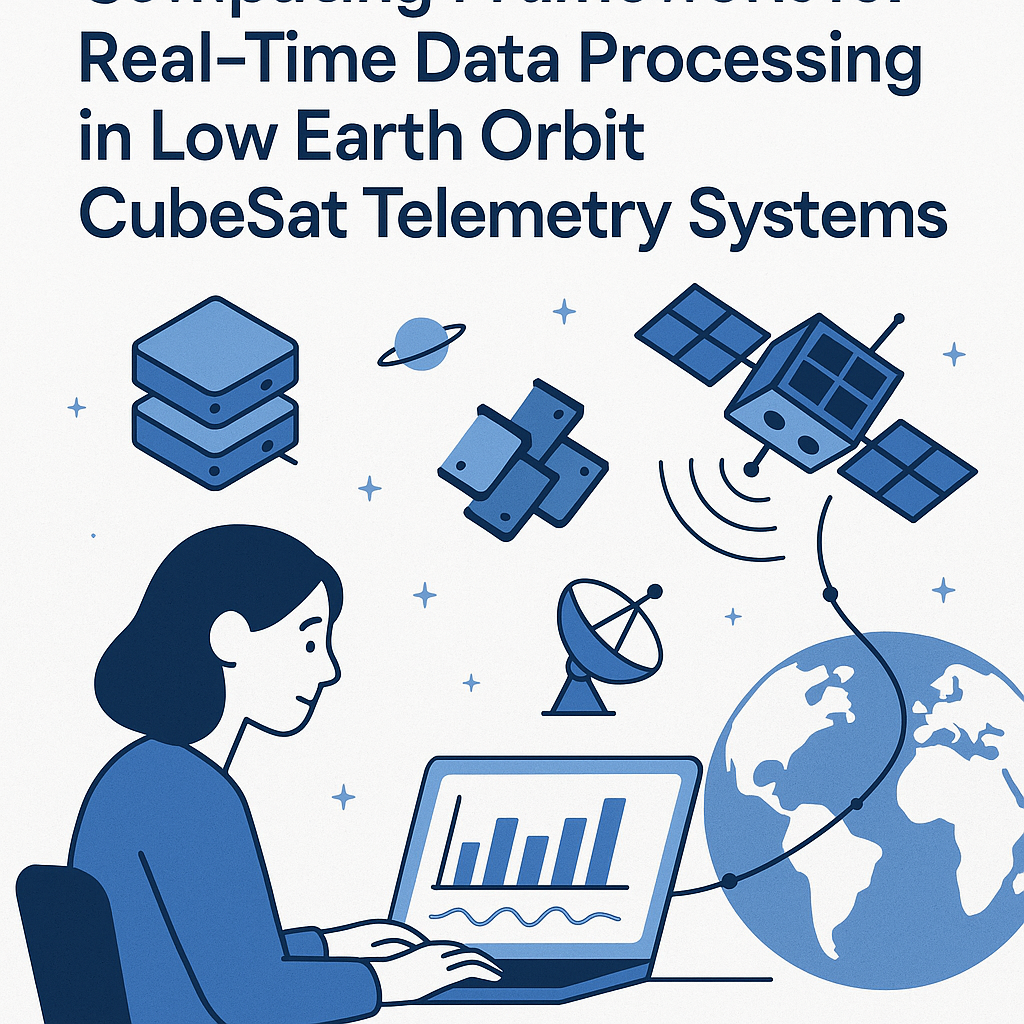Introduction
The rapid evolution of CubeSat technology has opened new avenues for research and applications in low Earth orbit (LEO). However, the growing complexity of these small satellites requires advanced frameworks for efficient data processing, especially in real-time telemetry systems. This blog explores the development of a modular embedded computing framework designed to enhance data processing capabilities in CubeSat telemetry systems.
Understanding CubeSat Telemetry Systems
CubeSat telemetry systems play a crucial role in monitoring satellite health and performance. They are responsible for collecting and transmitting data back to ground stations. The primary components of a telemetry system include:
- Data Acquisition: Collects sensor data from various onboard instruments.
- Data Processing: Analyzes and formats the data for transmission.
- Data Transmission: Sends processed data back to Earth.
Challenges in Real-Time Data Processing
Developing an efficient telemetry system comes with several challenges, particularly regarding real-time data processing:
- Data Volume: CubeSats can generate vast amounts of data, necessitating robust processing capabilities.
- Latency: Real-time processing is essential for timely decision-making and system health monitoring.
- Resource Constraints: CubeSats have limited power, memory, and processing capabilities, which complicates the implementation of advanced data processing techniques.
Introducing a Modular Embedded Computing Framework
A modular embedded computing framework offers a structured approach to tackle the challenges faced in CubeSat telemetry systems. This framework is designed to be flexible and scalable, allowing for the integration of various processing modules based on mission requirements. Key features of this framework include:
- Modularity: Individual components can be developed, tested, and upgraded independently, making it easier to adapt to new technologies and mission needs.
- Real-Time Processing: The framework supports real-time data processing with minimal latency, ensuring timely data analysis and decision-making.
- Resource Management: Efficient allocation and management of limited onboard resources, such as CPU and memory.
- Interoperability: Ability to communicate and integrate with various sensors and communication devices, enhancing the overall system functionality.
Framework Architecture
The proposed modular embedded computing framework consists of several layers:
- Hardware Layer: Utilizes state-of-the-art microcontrollers and processors optimized for low power consumption and high performance.
- Middleware Layer: Provides services for inter-module communication, data handling, and resource management. This layer is essential for ensuring that different modules can work together efficiently.
- Application Layer: Contains specific applications tailored for various telemetry tasks, such as data compression, anomaly detection, and machine learning algorithms for predictive analytics.
Implementation Strategy
Implementing the modular embedded computing framework involves several key steps:
- Requirement Analysis: Identify the specific needs of the CubeSat mission and define the telemetry system requirements.
- Module Development: Develop individual modules focusing on specific tasks within the telemetry framework.
- Integration Testing: Conduct thorough testing to ensure that all modules work seamlessly together and meet real-time processing requirements.
- Field Testing: Deploy the framework in a simulated or actual CubeSat mission to evaluate performance and make necessary adjustments.
Real-World Applications
The modular framework can be applied in various CubeSat missions, enhancing their telemetry systems. Some potential applications include:
- Earth Observation: Collecting and processing environmental data for climate monitoring.
- Space Weather Monitoring: Gathering data on solar activity and its impact on terrestrial technology.
- Communications Relay: Acting as a communication hub for other satellites or ground stations.
Conclusion
Developing a modular embedded computing framework for real-time data processing in CubeSat telemetry systems addresses the growing demands of modern space missions. By focusing on modularity, real-time processing, and efficient resource management, this framework can significantly enhance the capabilities of CubeSats. As the field of small satellite technology continues to evolve, such frameworks will play a pivotal role in advancing our understanding of space and improving the effectiveness of satellite missions.



